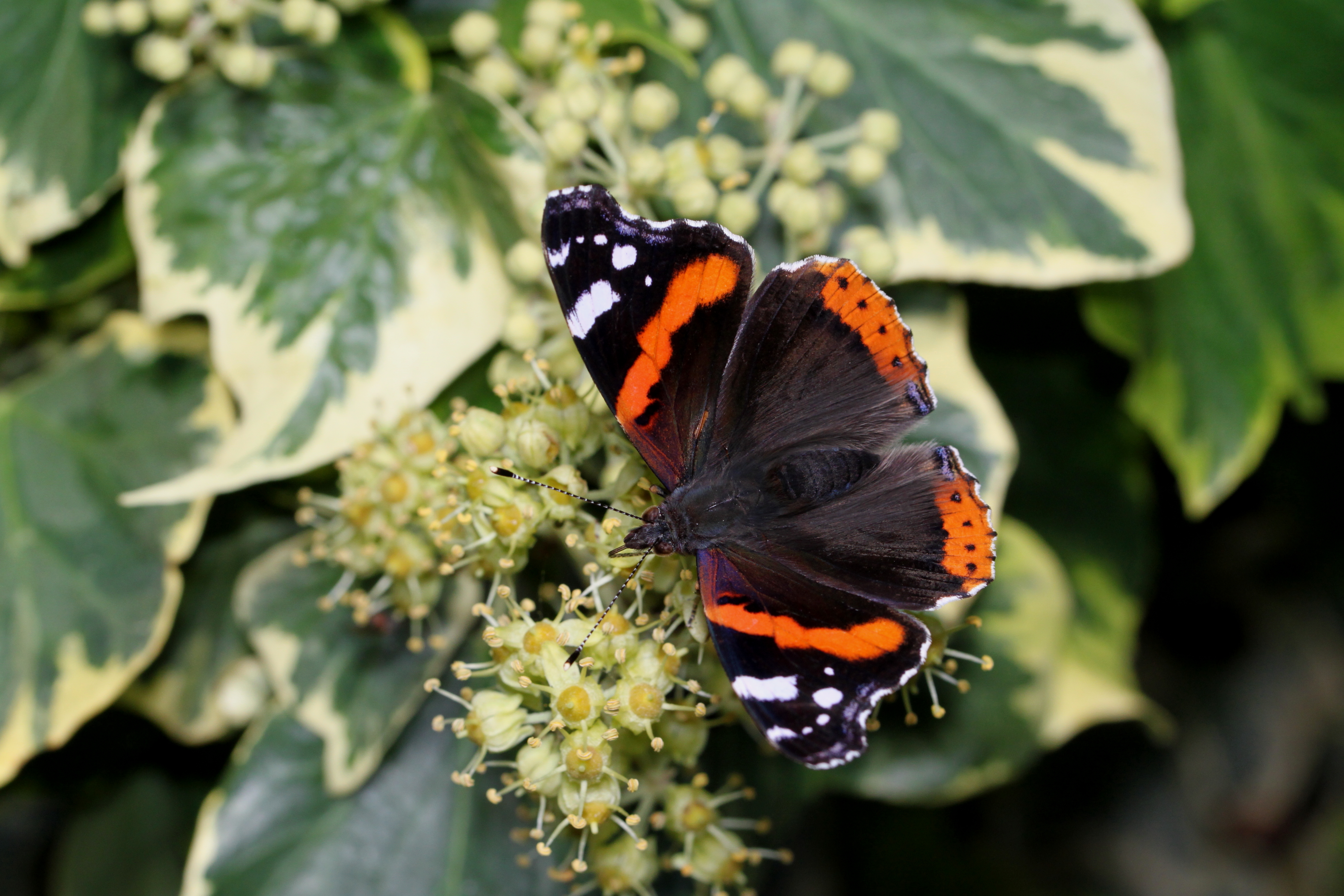
Vanessa atalanta
This stunning black-and-scarlet butterfly is one of our best-known species. A few successfully hibernate over-winter but most of the Red Admirals we see in late spring/early summer are migrants from mainland Europe. These waves of immigration are so variable that no two years are the same. With a combination of breeding and fresh immigration, peak numbers are seen between late July and September and then we may see large numbers nectaring on a variety of plants including Buddleia and Hemp Agrimony, and also feeding on fallen fruit.
In the past ten years or so it has been shown that Red Admirals can complete a breeding cycle over-winter. With global warming the changes in breeding behaviour of some of our native insects is set to continue.
Anywhere and everywhere, in Sussex. To attract them to your garden, consider planting Buddleia and Hemp Agrimony. In late September and October, most Red Admirals heading south on their autumn migration are found on the flowerheads of Common Ivy, so please do not cut back your garden Ivy until this migration has been completed.

Red Admiral nectaring on Variegated Ivy – photo by Martin Kalaher
.JPG)
Nectaring on Hemp Agrimony
.JPG)
Nectaring on Buddleia
.JPG)
Nectaring on Michaelmas Daisy
.JPG)
Nectaring on Michaelmas Daisy
.JPG)
Closed wings, nectaring on Variegated Ivy
Butterfly Conservation Red Admiral